The "Smartphone for Snapdragon Insiders" vs ROG5 Preview: Branded vs Original
by Andrei Frumusanu on August 16, 2021 10:00 AM EST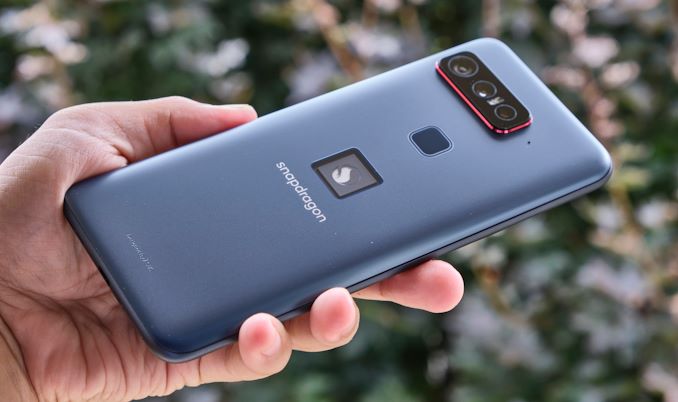
Today we’re reviewing a rather unusual device, the new ASUS “Smartphone for Snapdragon Insiders”. The device had been first announced a month ago by Qualcomm and ASUS, and represents a sort of weird kind of collaboration between the two companies. The phone follows a push by Qualcomm in social media and marketing to try to promote their Snapdragon brand, and a program called the Snapdragon Insiders initiative.
The “Smartphone for Snapdragon Insiders” – a rather unintuitive name which we’ll shorthand as SSI from here on, is weird in that while it’s primarily pushed by Qualcomm marketing, it’s actually an ASUS designed and manufactured product. The initial announcement of the device was a bit confusing in that one would have thought it’s a Qualcomm developed phone, but the relationship is rather a bit more blurred and complex. For the time being, you can think of the phone as simply being another ASUS device, with Qualcomm Snapdragon branding.
For today’s review (which we’re calling a preview for the time being, more on this later), there’s one extremely notable parallel which we can’t help making, and that is the comparison to ASUS’ own ROG Phone 5 phone which was announced and released earlier in the year. As both devices are designed and manufactured by the same party, there’s going to be some extreme similarities between the phones – so comparing them and pitting them against each other is an inevitability in my eyes.
Disclosure: Qualcomm has sent us a free review unit of the "Smartphone for Snapdragon Insiders" for review. The review is an independent evaluation of the product.
| ASUS Big Phones | |||||
| ROG Phone 5 |
"Smartphone for Snapdragon Insiders" |
||||
| SoC | Qualcomm Snapdragon 888 1x Cortex-X1 @ 2.84GHz 3x Cortex-A78 @ 2.42GHz 4x Cortex-A55 @ 1.80GHz Adreno 660 @ 840MHz |
||||
| DRAM | 8/16 GB LPDDR5 | 16 GB LPDDR5 | |||
| Storage | 128/256GB UFS 3.1 | 512GB UFS 3.1 | |||
| Display | 6.78" AMOLED 2448 x 1080 (20:9) 144Hz 240Hz Touch |
||||
| Size | Height | 173.00 mm | 173.15 mm | ||
| Width | 77.00 mm | 77.25 mm | |||
| Depth | 9.90 mm | 9.55 mm | |||
| Weight | 239 grams | 210 grams | |||
| Battery Capacity | 5770 typ (2x 2885) 22.33Wh "6000mAh" design 65W charging (PD3.0/QC5.0) |
"4000mAh" 65W charging (PD3.0/QC5.0) |
|||
| Wireless Charging | - | ||||
| Rear Cameras | |||||
| Main | 64MP IMX686 0.8µm pixels (1.6µm 4:1 16MP) f/1.8 OIS (SSI only) 26.6mm eq. |
||||
| Telephoto | - | 8MP 3x optical f/2.4 w/OIS 80mm eq. |
|||
| Wide | 12MP IMX363 1.4µm pixels Dual PDAF f/2.2 14.3mm eq. |
||||
| Extra | 5MP Macro | - | |||
| Front Camera | 24MP f/2.45 |
||||
| I/O | USB-C 3.5mm headphone |
USB-C | |||
| Wireless (local) | 802.11ax WiFi-6E Bluetooth 5.2 LE + NFC |
||||
| Other Features | In-display fingerprint sensor | Rear fingerprint sensor Global 5G (sub-6 + mmWave) |
|||
| Dual-SIM | Dual nanoSIM | ||||
| Launch Price | (16/256GB) $999 |
(16/512GB) $1499 |
|||
Starting off with the hardware, the SSI is powered by Qualcomm’s Snapdragon 888 SoC. Qualcomm had noted that the phone doesn’t contain the newer Snapdragon 888+ because the phone was already in design and production before the S888+ came to market, so they opted to use that platform for the device and avoid delaying it further.
What’s a bit special about the Smartphone for Snapdragon insiders is a few changes in the internal hardware. First off, the phone only comes in a single configuration, with a whopping 16GB of LPDDR5 and 512GB of UFS 3.1 storage. Generally, this is already one of the aspects which puts the phone at a higher price tier compares to other devices, so it’s important to keep this in mind.
The other important aspect of the SSI is its cellular network compatibility and radio front-end and antenna design: To keep it simple, this phone supports every single 5G frequency band in the world – including full mmWave support, something that is unique to the phone and can’t be found in any other device in the market. Generally, the inclusion of radio front-ends to support every single frequency band for every cellular market in the world is a bit unusual as most vendors attempt to optimise the internal hardware of the devices to simply support the frequency bands available in the target market, and simply develop a few different models that target certain markets (North America, EMEA, “Global” models, China, Japan). In the case of the SSI, it’s certainly quite a flex in terms of hardware capabilities – however, unless you’re an extremely international traveller and have according cell plans, it will be something for the very vast majority of users won’t be of practical advantage.
The phone features the same display and general form-factor as the ROG Phone 5. The 6.78” AMOLED feature a 2448 x 1080 resolution and goes up to 144Hz refresh rate, along with a 240Hz touch input sampling rate.
As noted in our announcement article, it really does seem here that the panel and the whole front glass assembly for the SSI is identical to that of the ROG Phone 5.
When face-on, the only real distinguishing factor between the two devices is the fact that the SSI doesn’t have the bottom front speaker slit, and instead uses a bottom-firing speaker. What’s interesting here is that there’s still a glass cut-out where the speaker slit is supposed to be, it’s just that it serves no purpose.
The form-factor of the phones is mostly identical; however, the SSI is 0.4mm thinner and 29g lighter than the ROG Phone 5. The reason for the smaller weight is a much smaller battery capacity – instead of the giant 6000mAh of the ROG 5, the SSI only features “a mere” 4000mAh. This is actually a 33% reduction – or better said, the ROG Phone 5 has a 50% larger battery. This will be quite worrying for the battery performance of the phone as we’ll see later.
The top of the SSI is practically identical to the ROG Phone 5 with zero differences alongside the glass face.
One difference in design between the phones is that the ROG Phone 5 employs a chamfer below the plastic “gasket” along the display glass, whereas the SSI avoids this and simply immediately starts the rounded metal frame of the device.
The backside of the phones is characterised by ASUS’s LED elements – this time around it swaps the ROG logo for a 3D Snapdragon logo – it’s actually a three-dimensional element that’s around 2mm deep below the back glass panel, and which lights up.
The internal hardware designs of these phones have the motherboard PCB actually placed in the very middle of the phone frame in a horizontal fashion – ASUS had designed this with the Aero Cooler accessory in mind, along with the secondary USB-C port to the side of the ROG Phones. These accessories of course don’t exist for the SSI – placing the Snapdragon logo here is a bit odd in terms of the thermals of the phone, which we’ll dwell deeper later.
Also notable on the backside of the SSI is the fact that there’s a fingerprint sensor. This is Qualcomm’s latest ultrasonic fingerprint sensor, however the fact that it’s on the backside of the phone seems a bit odd, and generally counterintuitive to the point of the sensor technology.
Qualcomm explains here that the phone uses a solid glass OLED substrate rather than the flexible OLED type, and this former generally cheaper panel type is not compatible with Qualcomm’s ultrasonic fingerprint sensors. This is a bit of a tough situation for the SSI – on one hand it would have been weird if a Snapdragon branded phone had to use a regular optical under-display fingerprint sensor from a regular provider, but this implementation of the ultra-sonic Qualcomm sensor is also generally a bit pointless and definitely not the best showcase of the technology.
At the bottom of the phone, there quite notable differences between the phones. We mentioned the bottom-firing speaker – generally the implementation here is not as good as what we have on the ROG Phone 5, and the audio isn’t as even. I’m not really sure why there was a need to change the layout.
Furthermore, what’s missing on the SSI is the 3.5mm headphone jack. ASUS is one of the rare few hardware vendors to still provide the 3.5mm headphone jack in their phones nowadays and actually pride themselves in the feature – which is good. The Snapdragon phone losing it is rather odd, but generally in line with what we’ve seen from OEMs over the years, instead opting to promote wireless alternatives.
In terms of camera setup, the SSI uses the same main sensor and ultra-wide as the ROG 5- however the main sensor gains OIS, and instead of a 5MP macro module we see the inclusion of a 8MP 3x optical zoom – the same hardware that’s included in the Pro models of the Zenfone 7 and the Zenfone 8 Flip. What’s interesting here is that it seems while the UI interface of the camera is identical to other ASUS phones, Qualcomm had taken up the task to calibrate and optimise the camera processing for the device – which is one of the critical differences to other ASUS phones.
The Smartphone for Snapdragon Insiders is rather special in terms of the wireless audio options – the phone comes along with a pair of Snapdragon branded Master & Dynamic MW08 (MW08S in this case) ANC earbuds. The non-branded variant of these TWS actually come at a MSRP of $299, so it’s actually a very substantial value proposition of the $1499 package of the SSI.


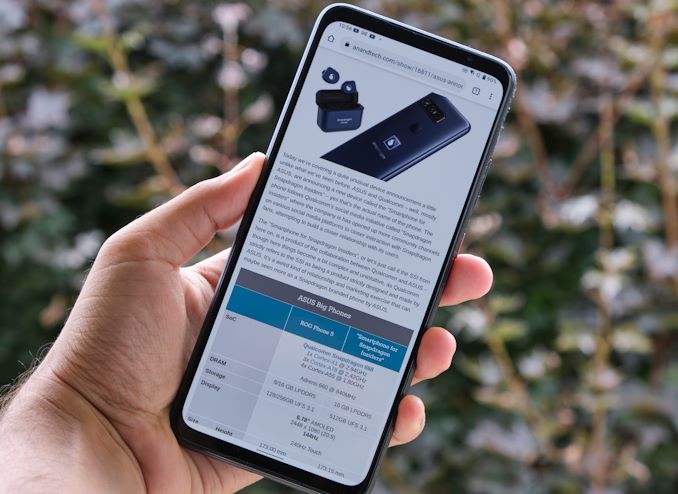
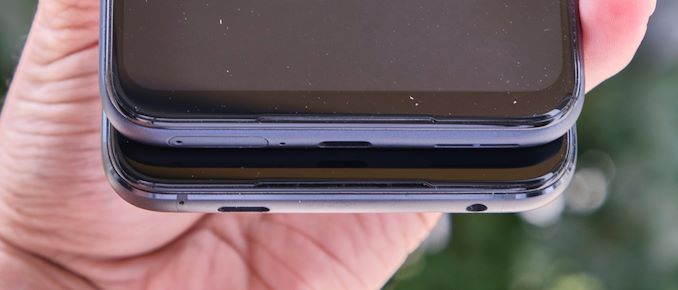
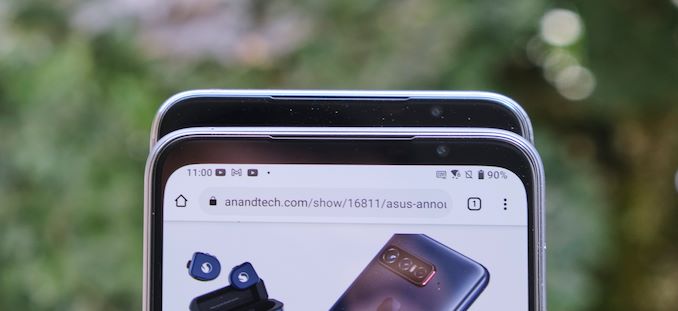
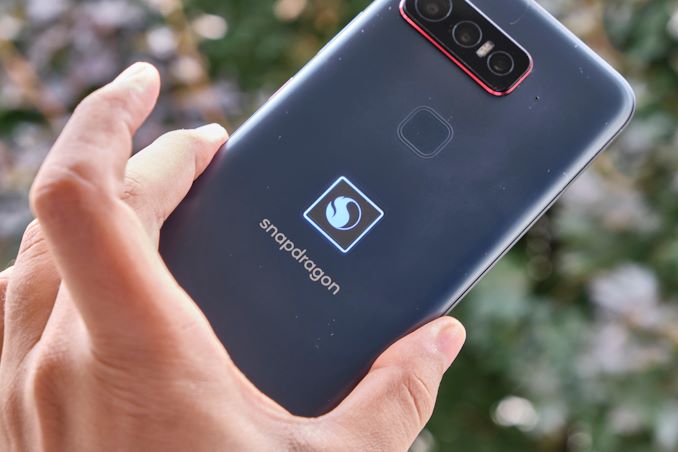











43 Comments
View All Comments
Spunjji - Tuesday, August 17, 2021 - link
Willing to bet that the image samples on that DXOMark review won't gel with the official rating...Kangal - Tuesday, August 17, 2021 - link
Came here to say the same thing.I expect QC to be worse than ASUS in photography, or at the best; not much better.
The ASUS RoG 5, gets so much right that it is one of the best phones of 2021. My only suggestions would be to make it smaller and lighter, better ergonomics, durability upgrades, perhaps IP68 certification, more available/affordable, and have better software support (AndroidOne? Bootloader?). Overall, its great and only outdone by the Sony phones.
s.yu - Tuesday, August 17, 2021 - link
Actually they may well do, I think they're cherry-picking the samples in recent years, at least for certain devices. Perception could be manipulated by manually discarding samples with minor focusing errors, vibrations, AWB issues, questionable lighting etc. and that could matter more than the actual performance of the device.Of course anybody could do that, but it's DXO we're talking about.
Mil0 - Wednesday, August 18, 2021 - link
Review is posted https://www.dxomark.com/smartphone-for-snapdragon-...It seems like dxomark reviewed the phone themselves, and they did find some issues with the algorithms.
BAllen - Tuesday, August 17, 2021 - link
Most people don't know that the Adreno 660 is just a 5nm overclocked Adreno 650. They both have the same 1,024 ALU count and design. The Adreno 650/+ runs at 540MHz-670MHz depending on the phone. The Adreno 660 runs at 840MHz. With these SOC's performance scales almost perfect. Each 100MHz clock bump gives the GPU a 100GFlops of FP32 compute. The Adreno 650/+ is rated at 1.2TFlops-1.38TFlops FP32. The Adeno 660 is rated at 1.78TFlops FP32. So you see the picture. And yes i said TFlops. Phones now have 1Teraflop+ GPU's. What's even better is a SD865 device with an Adreno 650 that holds a sustained clock can basically match a overheating, throttling 660.BAllen - Tuesday, August 17, 2021 - link
Also, the ROG 5's 2Vrms 3.5mm headphone jack uses the latest 32bit ESS SABRE qDAC and can push 700Ω 🎧. That with a 6000mAh battery and dual USB-C 3.1 has HDMI and MicroSD storage. So, its basically an upgrade for LG users. Though, i'm plenty happy with my modded LG v60 running A11 and Note 20 U5. The SD865/+ is all anyone would actually ever need for the next 5 years. That's why i bought 2 of each. With the v60 only costing $350-$400 new and the Note 20 UG at $600, who could pass on those deals. I got one v60 basically running at a HTPC hooked up to my LG OLED with a 512GB MicroSD loaded up.Kangal - Tuesday, August 17, 2021 - link
It's been a while since I've looked into the iGPU performance of phones.But with figures like that, it's pretty close to the power of the XB1 and PS4. Impressive. Not to mention, it getting access to newer software/hardware features, and using a more powerful CPU, you could argue they're even closer to that mainstream-2013-benchmark. Well, that is if you actually dock the phone and give it a steady supply of electricity and use some sort of Active Cooling to regulate it.
Then you have Apple. They might actually be more powerful (slightly) than last-gen console's performance. Add the SteamDeck to the conversation, and it's a good time to be a mobile gamer.
zodiacfml - Tuesday, August 17, 2021 - link
dont know whats going with Q these days. they should have Apple M1 like hardware by now but no, we get this 🤮abufrejoval - Tuesday, August 17, 2021 - link
Looks like you're trying to get somebody fired.Just sure hope it's not you!
CyborgAlienRay - Wednesday, August 18, 2021 - link
I wouldn't waste $1500 on an alpha device that's not even remarkable by any means, let alone one with no 3.5mm jack or can remain cool, or have removable memory, the additional headphones are worthless for me, so what about 16GB DRAM, the fact it's got 512GB of ReadOnlyMemory is great but, still not for the additional $500. Wishy-washy camera, overheating, and complete 5G networks doesn't add up to $1400, the rest are boring stats, it even doesn't have the next gen of processors in it, which may have gone a long ways but, still not worth that. Even looks cheap, not sure if that's a Qualcomm decision or an Asus one but, someone dropped the leaded loaded iron ball on someone's head on that one for sure.